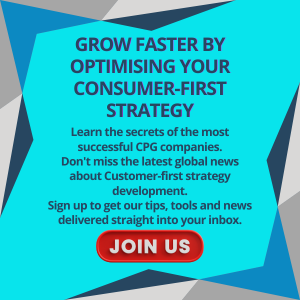As a dedicated customer centricity champion, just like you, I spend a lot of my time researching what customers want, just like you do too, I hope. In this period of great global unrest, understanding our customers has become more important than ever before.
Just a few short months ago, I didn’t think that it would be possible for customer-centricity to become any more important. But things change and now everyone is fighting to keep their businesses afloat. So the new and constantly altering needs and desires of our customers should be a top priority for all of us to follow.
To help me keep abreast of the changes, I’m regularly checking online searches for such terms as customer service, customer satisfaction and customer care. Google and Bing have become some of my best friends!
A couple of years ago, I came across some surprising facts, which prompted this post when I first drafted it. But with the incredibly unforeseen events of the past few years, I feel it deserves a update.
Already at the time, my analysis suggested a serious problem in the business of looking after our customers. Today it is clear that any organisation that hasn’t spent time putting things right, will most certainly be suffering in this post-pandemic, global unrest in which companies are trying to do business. I’d be interested to hear your own thoughts once you have read the article.
Customer Centricity
Wikipedia, another of my faithful friends, doesn’t have a definition for customer centricity! If you look up the term, you get directed to customer satisfaction! Unbelievable. Try it for yourself and see!
Gartner defines customer centricity as:
“The ability of people in an organisation to understand customers’ situations, perceptions, and expectations.”
It then goes on to say:
“Customer centricity demands that the customer is the focal point of all decisions related to delivering products, services and experiences to create customer satisfaction, loyalty and advocacy.”
What I particularly like about this definition, is that it refers to customer understanding and the need for customers to be the focus of decision-making. It also highlights the need to create not just customer satisfaction, but loyalty and advocacy too.
Now whereas it seems to be difficult to build longterm loyalty these days, especially in B2C businesses, advocacy is essential in today’s connected world. Of course the latter means that customers are surprised and delighted rather than just satisfied, so that they are excited to share their positive experiences with others.
Need help in adopting a customer-first strategy?
Check out our Brand Accelerator™ Course in the C3Centricity Academy
Aim for Advocacy Rather than Loyalty
As we all know, it costs between 5 and 25 times more to acquire a new customer as it does to retain existing ones. (Invesp) Therefore strong loyalty is a valuable benefit for a brand. But covid saw us all changing our purchasing behaviours, as we researched, compared and then bought more online. So although loyalty is difficult, it … Click to continue reading







 Every time someone came to my room, they introduced themselves and explained why they were there. Over the course of the days I spent at the hospital and then the clinic, I saw many different doctors, nurses. cleaners, waiters etc. I appreciated that they themselves always started by introducing themselves and stating what their responsibility was in caring for me.
Every time someone came to my room, they introduced themselves and explained why they were there. Over the course of the days I spent at the hospital and then the clinic, I saw many different doctors, nurses. cleaners, waiters etc. I appreciated that they themselves always started by introducing themselves and stating what their responsibility was in caring for me.
 Peru is an understated yet remarkable country that deserves a more amazing reputation than I believe it has today. While its image is dominated by Machu Picchu, this wonderful l and has so much more to offer visitors. From the sprawling cities of Lima and Arequipa to the rugged desolation of the high altitude desert plains and the humid cloud forests, I quickly fell in love with the country and its people.
Peru is an understated yet remarkable country that deserves a more amazing reputation than I believe it has today. While its image is dominated by Machu Picchu, this wonderful l and has so much more to offer visitors. From the sprawling cities of Lima and Arequipa to the rugged desolation of the high altitude desert plains and the humid cloud forests, I quickly fell in love with the country and its people. According to research conducted last year by
According to research conducted last year by  Target announced last October its plans to introduce the “
Target announced last October its plans to introduce the “ Tesco recently introduced their “
Tesco recently introduced their “ Sainsbury’s has now retaliated with the launch of a new campaign with the title “
Sainsbury’s has now retaliated with the launch of a new campaign with the title “









